STREAMLINING HUMAN RESOURCE MANAGEMENT
Human Resource Information Systems (HRIS) are software solutions that facilitate the management of human resources within organizations. These systems integrate various HR functions, including employee data management, payroll processing, performance evaluation, recruitment, training, and more. HRIS systems provide a centralized database that enables HR professionals to streamline processes, improve efficiency, and make data-driven decisions.
The Use of HRIS Systems:
HRIS systems offer numerous benefits to organizations of all sizes. Some key advantages include:
1. Efficient Employee Data Management: HRIS systems eliminate the need for manual paperwork and provide a digital platform to store and update employee information such as personal details, job history, performance evaluations, and more.
2. Streamlined Recruitment and Onboarding: These systems automate the recruitment process, allowing HR professionals to post job openings, screen resumes, schedule interviews, and manage onboarding tasks efficiently.
3. Enhanced Payroll and Benefits Administration: HRIS systems automate payroll calculations, tax deductions, and benefits administration, reducing errors and ensuring compliance with legal regulations.
4. Performance Evaluation and Talent Management: HRIS systems enable organizations to track employee performance, set goals, conduct performance reviews, and identify training needs to optimize talent management strategies.
5. Data Analytics and Reporting: HRIS systems provide robust reporting capabilities, allowing HR professionals to extract valuable insights from employee data, monitor trends, and make data-driven decisions.
Top 5 HRIS Systems and a Comparison:
1. Workday: Workday is a leading cloud-based HRIS system known for its comprehensive functionality. It offers modules for HR management, payroll, benefits, talent management, and workforce planning. Workday’s user-friendly interface, scalability, and extensive reporting capabilities make it a preferred choice for medium to large organizations.
2. Oracle HCM Cloud: Oracle HCM Cloud provides a robust suite of HRIS tools that encompass recruitment, performance management, payroll, learning management, and more. It offers advanced analytics, mobile accessibility, and seamless integration with other Oracle products. Oracle HCM Cloud is popular among global enterprises due to its scalability and localization capabilities.
3. SAP SuccessFactors: SAP SuccessFactors is a widely adopted HRIS system that integrates HR processes with talent management. It covers core HR, payroll, performance management, learning, and employee engagement. With its strong analytical capabilities, integration options, and global scalability, SAP SuccessFactors serves organizations of various sizes and industries.
4. ADP Workforce Now: ADP Workforce Now caters to small and medium-sized businesses, offering a comprehensive HRIS solution. It includes features for payroll, benefits administration, time and attendance tracking, talent management, and more. ADP’s user-friendly interface, automated compliance features, and robust customer support make it an appealing choice for smaller organizations.
5. BambooHR: BambooHR is a popular HRIS system designed for small and mid-sized businesses. It provides a user-friendly interface, intuitive self-service tools, and features for employee data management, recruitment, onboarding, performance management, and reporting. BambooHR’s affordability, scalability, and emphasis on employee engagement make it a preferred choice for growing organizations.
Let’s compare the five HRIS Systems mentioned visually:
| Criteria | Workday | Oracle HCM Cloud | SAP SuccessFactors | ADP Workforce Now | BambooHR |
|---|---|---|---|---|---|
| Scalability | High | High | High | Moderate | Moderate |
| Features | Comprehensive | Extensive | Broad | Wide range | Balanced |
| User-Friendliness | Good | Good | Good | Excellent | Excellent |
| Analytics and Reporting | Robust | Strong | Advanced | Basic | Basic |
If you’re looking to migrate to an HRIS or are looking for a consulting to help complete your HRIS project, we can provide the help. Reach out to Chris for a discovery call.
When choosing an HRIS or HCM, several factors should be considered to ensure the system aligns with your organization’s needs and supports effective HR management. Here are 3 key factors to consider:
Business Requirements: Identify your organization’s specific HR requirements, such as employee data management, payroll processing, benefits administration, performance management, recruitment, and training. Ensure that the HRIS you choose can meet these requirements and provide the necessary features and functionalities.
Scalability: Consider the scalability of the HRIS. Evaluate whether it can accommodate your organization’s current workforce size and growth projections. The system should be able to handle increasing employee data, additional functionalities, and evolving business needs as your organization expands.
Integration Capabilities: Assess the HRIS’s integration capabilities with other systems and applications within your organization’s technology ecosystem. It should seamlessly integrate with existing systems such as payroll, time and attendance, learning management, and financial systems to ensure smooth data flow and avoid duplication of efforts.
If you’re looking for assistance in selecting, implementing or adding features to an HRIS, you can read more about the importance of expert consulting.
